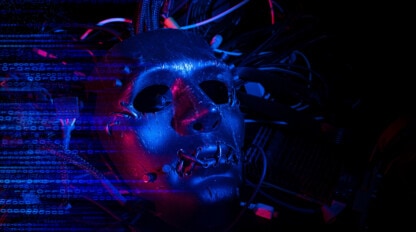Don’t Be a Michael Scott – Embrace Change in IT

Embracing change in IT is one of the biggest impediments IT Departments have to the adoption of new technologies. Many IT departments are entrenched and content in the way they currently run IT. But as the technology industry continues to embrace IT-as-a-Service, IT departments must be receptive to change if they want to stay competitive.
Embracing Change in IT
I’m a big fan of the TV show The Office. In my opinion, it’s the second funniest series behind Seinfeld (and it’s a very close second). Dunder Mifflin Scranton Regional Manager Michael Scott is a quintessential example of a decision maker who’s against the adoption of new technologies because of fear, a lack of understanding, and downright stubbornness.
In the “Dunder Mifflin Infinity” episode in Season Four, the young, newly promoted hot-shot exec (and former intern) Ryan Howard returns to the Scranton branch to reveal his plan on how he’s going to use technology to revitalize the company. Part of his plan is the rollout of a new website that will allow Dunder Mifflin to be more agile and allow customers to make purchases online. Michael and his loyal sidekick (and part-time beet farmer) Dwight Schrute are staunchly opposed to this idea.
At this point in the episode Michael is against Ryan’s idea of leveraging technology to improve the business process out of pure stubbornness. Michael hasn’t heard Ryan’s strategy or thought out the pros and cons of leveraging technology and embracing change in IT to improve business processes. His mindset is simply “How can this new technology possibly be better than the way we have always done things?”
Maybe your company has always bought infrastructure and run it in house—so why change now? Well, running a hybrid cloud environment can provide better service to your end users and also contribute to cost savings. Regardless if you act or not, it’s something you need to keep an open mind about and look into closely. Dismissing the concept immediately isn’t going to do you any good.
Creed Bratton is the oldest employee in the Scranton office. After hearing Ryan’s announcement about implementing new technologies, Creed gets extremely worried that he’s going to get squeezed out of his job. He goes to Michael and shares his concerns that both their jobs may be in jeopardy. At this point, Michael is now against the adoption of technology due to a lack of understanding. Ryan’s plan is to retrain his employees so that they have the knowledge and skillset to leverage new technologies to improve the business—not to use it as a means to downsize the workforce.
This is similar to the fear that cloud computing will cause widespread layoffs of IT workers. This is not necessarily the case. It’s not about reducing jobs; it’s about retraining current employees to take on new roles within the department.
Ryan claims that the new website is going to significantly increase sales. Michael and Dwight set out on a road trip to win back several key customers whose accounts they have recently lost to competitors to prove to Ryan that they don’t need a website. Their strategy? Personally deliver fruit baskets. Each customer ends up turning them down because the vendors they are currently using have websites and offer lower prices.
In this case, Dunder Mifflin’s lack of IT innovation is directly affecting its bottom line. They’re making it an easy decision for customers to leave because they simply aren’t keeping pace with the competition. As a modern day IT department, you need to be leveraging technologies that allow people to do their jobs easier and in turn reduce costs for the organization. For example, by installing a SaaS-based marketing automation tool (i.e. HubSpot), your marketing team can automate workloads and spend more time generating leads for the sales team to drive revenue. By using Amazon, or another IaaS platform, you have the ability to buy only the capacity you actually need, saving on infrastructure hardware capital and maintenance costs. For workloads that make more sense running on-prem, creating a private cloud environment with a service catalog can streamline performance and give users the ability to choose and instantly receive the IT services they need.
At the end of the episode, an enraged Michael and Dwight head back to the office. On their way back, Michael’s GPS instructs him to take a right hand turn. Dwight looks at the screen and tells Michael that it’s saying to bear right around the bend, but Michael takes the sharp right trusting the machine and follows it…directly into a lake. Dwight shouts that he’s trained for this moment and jumps in the two feet of water to valiantly save Michael. When they get back to the office Michael announces “I drove my car into a [bleep] lake. Why you may ask did I do this? Well, because of a machine. A machine told me to drive into a lake. And I did it! I did it because I trusted Ryan’s precious technology, and look where it got me.” At this point, Michael is resisting technology because of fear.
In today’s changing IT landscape, embarking on new IT initiatives can be scary. There are risks involved, and there are going to be bumps along the way. (Full disclosure, Ryan ends up getting arrested later in the season for fraud after placing orders multiple times in the system—but you get the idea.)But at the end of the day, the change now taking place in IT is inevitable. To be successful, you need to carefully, and strategically, plan out projects and make sure you have the skillsets to get the job done properly (or use a partner like GreenPages to help).The risk of adopting new technologies is nothing compared to the risk of doing nothing and being left behind. Leave a comment and share how your organization is dealing with the changing IT landscape…or let me know what your favorite Office episode is…
If you’d like to talk more about how GreenPages can help with your digital transformation strategy, fill out this form!




